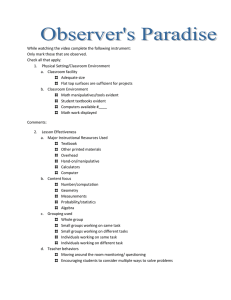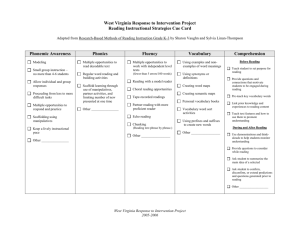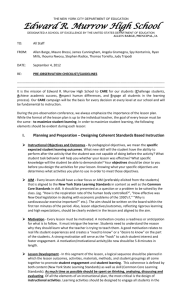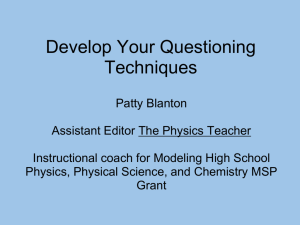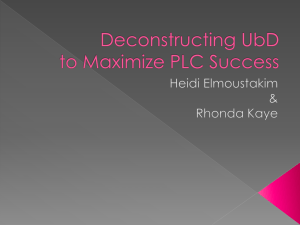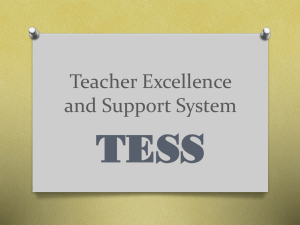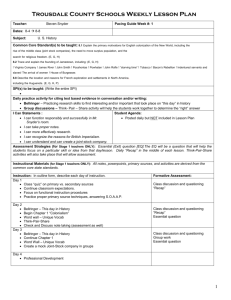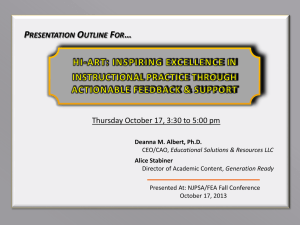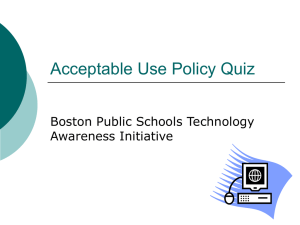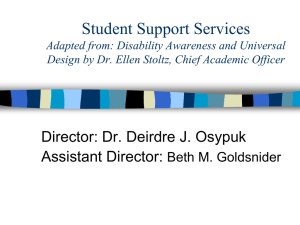Classroom Observation Instrument
advertisement
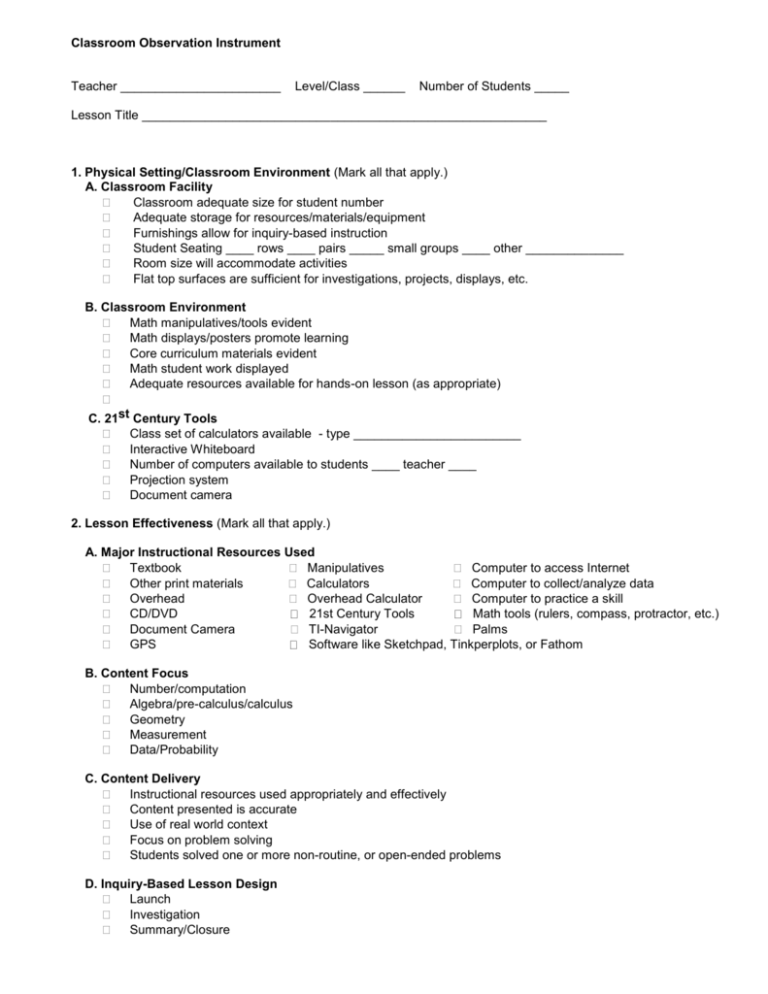
Classroom Observation Instrument Teacher _______________________ Level/Class ______ Number of Students _____ Lesson Title __________________________________________________________ 1. Physical Setting/Classroom Environment (Mark all that apply.) A. Classroom Facility Classroom adequate size for student number Adequate storage for resources/materials/equipment Furnishings allow for inquiry-based instruction Student Seating ____ rows ____ pairs _____ small groups ____ other ______________ Room size will accommodate activities Flat top surfaces are sufficient for investigations, projects, displays, etc. B. Classroom Environment Math manipulatives/tools evident Math displays/posters promote learning Core curriculum materials evident Math student work displayed Adequate resources available for hands-on lesson (as appropriate) C. 21st Century Tools Class set of calculators available - type ________________________ Interactive Whiteboard Number of computers available to students ____ teacher ____ Projection system Document camera 2. Lesson Effectiveness (Mark all that apply.) A. Major Instructional Resources Used Textbook Manipulatives Computer to access Internet Other print materials Calculators Computer to collect/analyze data Overhead Overhead Calculator Computer to practice a skill CD/DVD 21st Century Tools Math tools (rulers, compass, protractor, etc.) Document Camera TI-Navigator Palms GPS Software like Sketchpad, Tinkperplots, or Fathom B. Content Focus Number/computation Algebra/pre-calculus/calculus Geometry Measurement Data/Probability C. Content Delivery Instructional resources used appropriately and effectively Content presented is accurate Use of real world context Focus on problem solving Students solved one or more non-routine, or open-ended problems D. Inquiry-Based Lesson Design Launch Investigation Summary/Closure E. Grouping Arrangement(s) Used Whole Group Small groups working on same task Small groups working on different tasks Individuals working on same task Individuals working on different tasks Grouping arrangements were appropriate for the instructional goal and activity F. Teacher and Student Behaviors Observed Teacher Behaviors Setting up and guiding students through meaningful real-world problems Moving around the room monitoring/questioning Encouraging students to consider multiple ways to solve problems/test solutions Guiding students in the use of manipulatives/technology Promoting student use of inquiry/creativity through questioning/collaboration Facilitating discussions about problem-solving processes/ efficiency/effectiveness Leading students through discussions/journaling of their understanding Student Behaviors Interacting with others Working alone Working in groups to test solutions Working in teams to challenge and defend solutions Applying math to real world problems st 21 Century Information and Communication Skills Sharing solution processes and listening to others share their thinking Defending solution processes' efficiency and usefulness Communicating math ideas: demonstrations, models, drawings, and arguments Helping to clarify each other's learning through discussion/modeling G. Instructional Strategies Connection to prior knowledge Provides differentiated instruction Teacher modeling Collaborative grouping Opportunities for students to justify solutions Incorporate varied assessments 3. Questioning Strategies (Mark all that apply.) Wait Time I Wait Time II No/limited wait time Questions were higher-order and stimulated broad student responses Questions were lower-cognitive and stimulated narrow student responses No questions were asked by the teacher or posed through the activity being conducted Teacher used strategy to ensure all students had opportunity to respond Teacher asked probing follow-up questions based on students' understanding (individuals, small group, whole class) Students are encouraged to ask questions of each other and of the teacher Teacher provided specific praise Teacher provided general praise Teacher provided no praise The questioning strategies checked for student understanding of apparent instructional goal Yes No 4. Classroom Climate A. Student Involvement Majority of students demonstrated interest/were engaged and on task Most students take initiative in classroom discussions Majority of students uninterested or apathetic Majority of students were frequently off task B. Classroom Management Classroom orderly, no disruptions that impaired learning environment Classroom generally orderly, but some disruptions impaired learning environment Classroom disorderly, frequent student disruptions seriously impaired the learning environment The climate was generally positive The climate enhanced learning opportunities for students 5. Development of Higher Order Thinking Skills A. Check all skills that were introduced and/or developed in the observed lesson. Making observations Reciting/recalling facts Classifying Estimating Choosing appropriate strategies Measuring Collecting/recording data Comparing/contrasting Organizing and displaying data Drawing conclusions Interpreting and analyzing data Making predictions Selecting problem-solving strategy Creating/formulating patterns/equations Justifying/verifying solutions/strategies B. Learner Attitudes Demonstrated Dependent on others Cooperation Persistence Responsibility Confidence Enthusiasm Objectivity Accuracy Critical thinking Self-directed Curiosity
